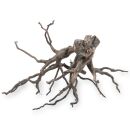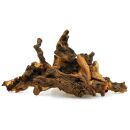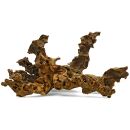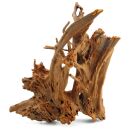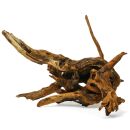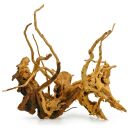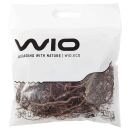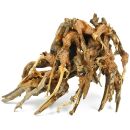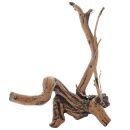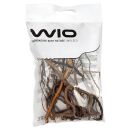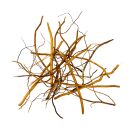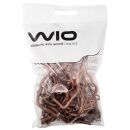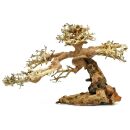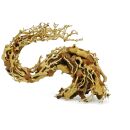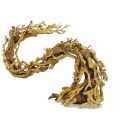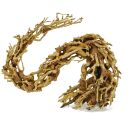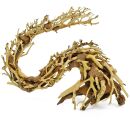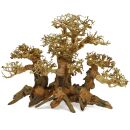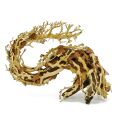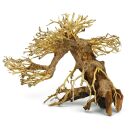Decorative driftwood for your aquarium and aquascape
Many suitable driftwoods are available for aquascaping purposes. Generally, the roots are similar to the product photos and arrive pre-assembled as a single piece or set at Aquasabi. Since each piece of wood is unique, in individual cases we also offer separately photographed unique pieces. So you get exactly the piece of driftwood pictured in the article description (What you see is what you get, or WYSIWYG for short). For a better overview, we have pre-sorted the pieces of wood into different size categories, from very small (XS) to thumping huge (XXXL).
You can purchase various types of driftwood in our webshop, which are optically very different from each other. Nicely branched woods with lots of side branches, like Red Moorwood (also called Fingerwood or Spiderwood) are very popular. The slightly darker Moorwood is beautifully branched and offers a very natural look. Talawa Wood is branching nicely as well, with an interesting grain, but is much more streamlined than Moordwood or Red Moorwood.
Apart from the classic Mangrove wood, Dark Iron, Gnarly Driftwood and the more straight-growing Mekong Wood are among the more compact and heavier sorts. Mystic Wood is a very hard wood as well, with a pronouned grain and bizarre, peculiar structure. Furthermore, we offer the so-called Bonsai Trees in our webshop. These are small trees crafted from wood and in themselves already small works of art.
They can be beautifully greened with mosses or other aquatic plants and are a real eye-catcher in an aquascape.
Especially during the cycling phase, certain types of driftwood can tint the aquarium water brown due to the humic substances released by them. However, more frequent water changes during this period or the use of the filter product Seachem Purigen will quickly and easily turn your water crystal clear again. In individual cases, driftwood sorts like Red Moorwood may form a whitish bacterial coat during the cycling phase. These bacteria utilize residual sugar still present in the root. After depletion, the bacterial film will disappear by itself. It poses no threat. If you do not want to wait, you can easily suck it away with a hose. Predators like snails and shrimp are quite happy about this little, bacterial bonus meal, too!
While heavy woods sink directly, lighter driftwoods tend to float, especially in the first few days. The article "Preparing driftwood" will show you many tips and tricks for the secure placement and fixing of driftwoods and also hints concerning the appropriate planting and processing of the driftwood.

